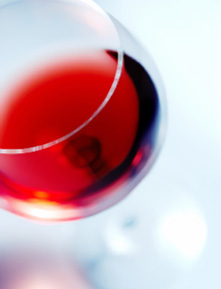How to Taste Wine (Part 2).
You can tell a lot about a wine simply by studying its appearance. The wine should be poured into a clear glass and held in front of a white background or piece of white paper so that you can examine the colour.
The colour of wine varies tremendously, even within the same type of wine. For example, white wines are not actually white; they range from green to yellow to brown. More colour in a white wine usually indicates more flavour and age, although a brown wine may have gone bad. Where as time improves many red wines, it ruins most white wines. Red wines are not just red; they range from a pale red to a deep brown red, usually becoming lighter in colour as they age.
Now check the intensity by tilting the glass to about 45% and looking at the rim, it will vary from clear to pale to medium to opaque.

Next check the colour (see above) white will vary from colourless to lemon to amber and then brown these colours will give an indication of the age of the wine, pale or green indicating a youthful wine then as you get towards the darker colours indicating an older wine. With red, purple would indicate a young wine then as it ages going through ruby, garnet, tawny and then brown. You can not always be sure at this stage what you are trying, this simply gives a set of clues, that you add to when smelling and tasting later on.
When you swirl the wine in the glass check how the residual wine sticks to the edge of the glass, how slowly does it run down the edge of the glass, the slower or more sticky the wine the higher the alcohol content is, this is referred to as the tears or legs.
Next time we will look at what information the smell or nose can tell us about the wine.
"Nothing in life is to be feared, it is only to be understood. Now is the time to understand more, so that we may fear less".
Marie Curie
No comments:
Post a Comment